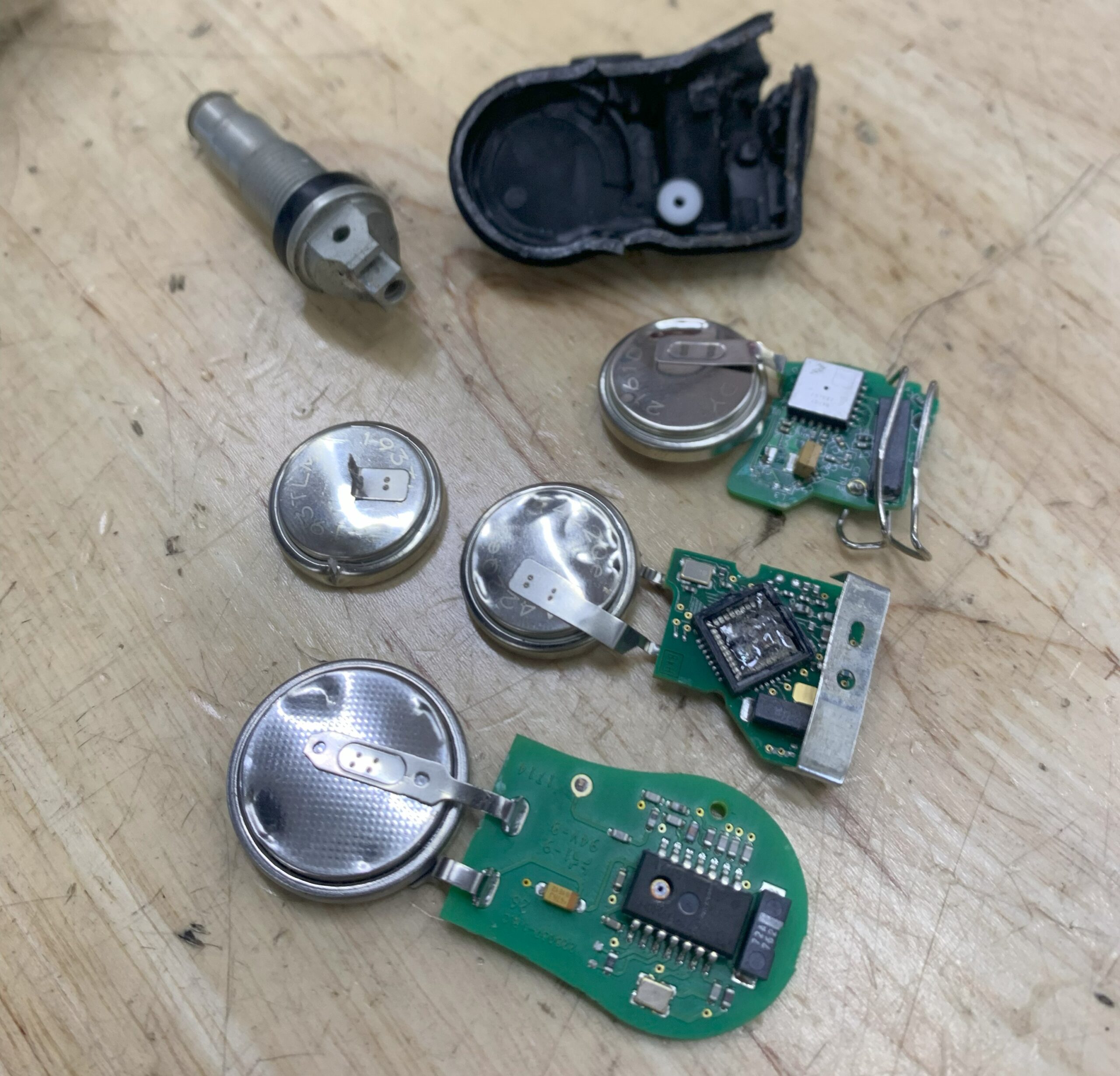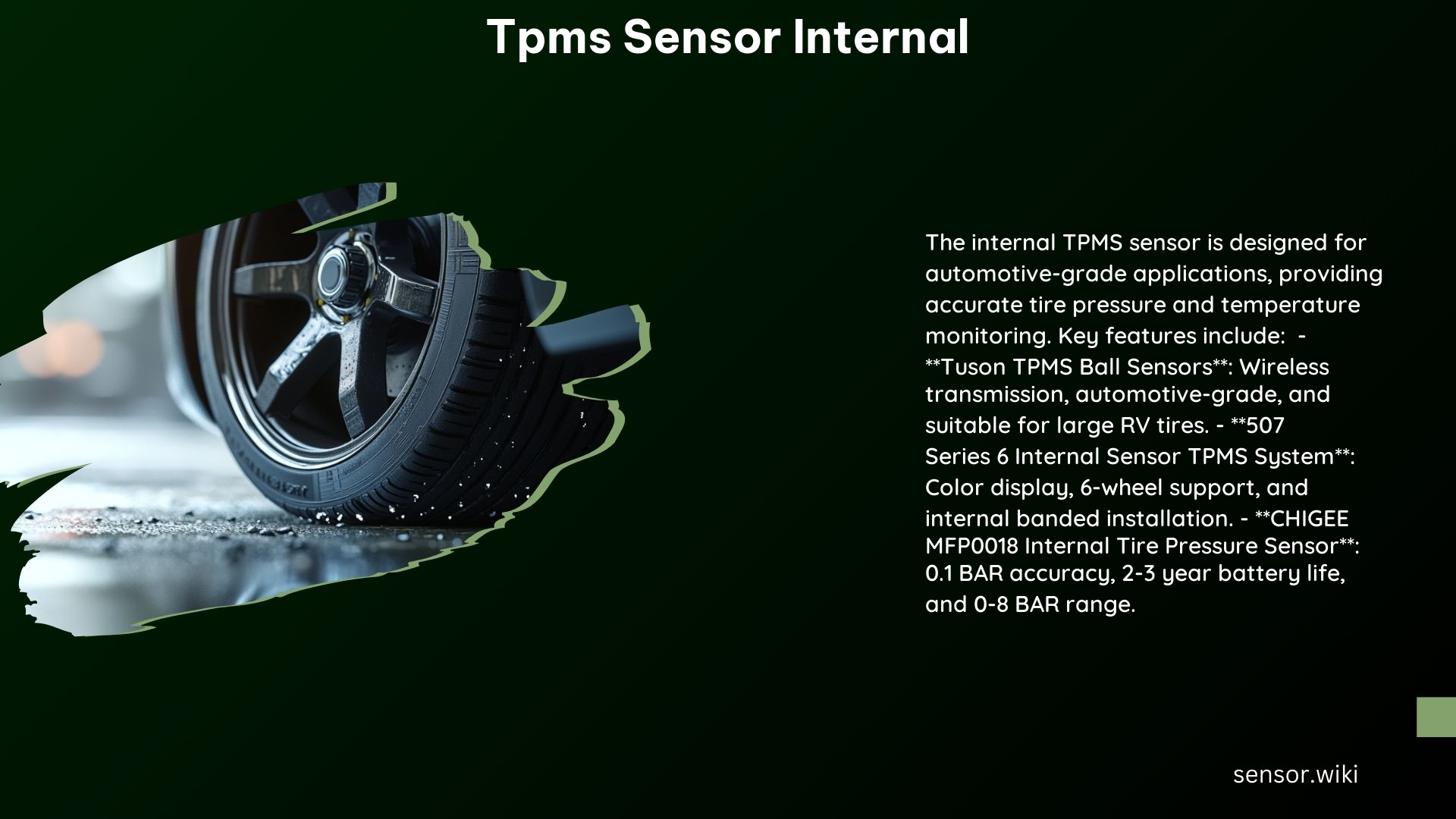TPMS (Tire Pressure Monitoring System) internal sensors are advanced automotive components designed to provide accurate and reliable monitoring of tire pressure and temperature, ensuring optimal vehicle performance and safety. These sensors are strategically placed inside the tire, continuously gathering data and wirelessly transmitting it to a central control unit for real-time monitoring and analysis.
Technical Specifications of TPMS Internal Sensors

Material and Dimensions
- Material: TPMS internal sensors are typically constructed using high-quality Acrylonitrile Butadiene Styrene (ABS) polymer, known for its exceptional durability, impact resistance, and weatherability.
- Dimensions: The dimensions of TPMS internal sensors can vary, but they are generally compact, measuring around 25 x 25 x 49.5 mm, allowing for easy integration within the tire assembly.
- Weight: The average weight of TPMS internal sensors is approximately 0.41 kilograms, ensuring minimal impact on the overall tire and vehicle weight.
Pressure and Temperature Measurement
- Pressure Range: TPMS internal sensors are designed to measure a wide range of tire pressures, from 0 to 116 psi (0 to 8 bar), accommodating a variety of vehicle and tire applications.
- Pressure Accuracy: The pressure accuracy of TPMS internal sensors is typically within ±1.5 psi (±0.1 bar), ensuring precise monitoring of tire inflation levels.
- Temperature Accuracy: TPMS internal sensors can accurately measure tire temperature, with a typical accuracy of ±3°C, providing valuable insights into the thermal conditions of the tires.
Wireless Communication
- Transmitting Frequency: Most non-Euro TPMS internal sensors operate on a frequency of 433.92 MHz, which is a widely adopted standard for wireless tire pressure monitoring systems.
- Transmission Range: TPMS internal sensors are designed to reliably transmit data to the central control unit within a range of up to 15 meters, ensuring consistent communication even in challenging environments.
Power and Battery Life
- Power Source: TPMS internal sensors are typically powered by long-lasting lithium-ion batteries, providing a service life of 2 to 3 years, depending on the sensor model and usage patterns.
- Battery Monitoring: Some advanced TPMS internal sensors incorporate battery level monitoring, alerting the driver when the battery is nearing its end of life, allowing for timely replacement.
Functionality and Features of TPMS Internal Sensors

Accurate Tire Pressure and Temperature Monitoring
- TPMS internal sensors continuously monitor the tire pressure and temperature, providing real-time data to the vehicle’s central control unit.
- This information is crucial for maintaining optimal tire performance, fuel efficiency, and safety, as underinflated or overheated tires can significantly impact vehicle handling and stability.
Wireless Data Transmission
- TPMS internal sensors wirelessly transmit the collected data to the vehicle’s central control unit, eliminating the need for physical connections and simplifying the installation process.
- The wireless communication ensures seamless integration with the vehicle’s electronic systems, allowing for easy monitoring and analysis of tire conditions.
Multifunctional Capabilities
- Some advanced TPMS internal sensors offer additional features, such as a built-in cigarette lighter power supply and USB mobile phone charging capabilities, providing convenient power options and enhancing the overall user experience.
Easy Installation and Maintenance
- TPMS internal sensors are designed for straightforward installation, often requiring only the loosening of the tire bead to drop the sensor into the wheel.
- The compact size and lightweight construction of these sensors minimize the impact on the tire and wheel assembly, ensuring a smooth integration process.
Reprogramming and Wiping
- TPMS internal sensors can be reprogrammed or wiped using a specialized Flipper device, allowing for easy configuration and maintenance of the tire pressure monitoring system.
- This feature is particularly useful when replacing tires, transferring sensors to a new vehicle, or troubleshooting any issues with the TPMS.
Conclusion
TPMS internal sensors are a crucial component of modern vehicle safety and performance, providing accurate and reliable monitoring of tire pressure and temperature. With their advanced technical specifications, wireless communication capabilities, and user-friendly features, these sensors play a vital role in enhancing driving safety, improving fuel efficiency, and extending the lifespan of tires. By understanding the intricacies of TPMS internal sensors, vehicle owners and technicians can ensure optimal tire maintenance and maximize the overall performance and safety of their vehicles.
References:
- Tuson RV Brakes. (n.d.). NEW** Internal TPMS Ball Sensor (TPMS-BALLSENS). Retrieved from https://tusonrvbrakes.com/products/new-tpms-ball-sensor-tpms-sens-bs
- Amazon. (n.d.). Tire Pressure Sensor, Car TPMS Tyre Pressure Monitoring System LCD Cigarette Lighter USB 4 Internal Sensor, Black. Retrieved from https://www.amazon.com/Pressure-Monitoring-Cigarette-Lighter-Internal/dp/B0888LM1GB
- CHIGEE. (n.d.). MFP0018 Internal Tire Pressure Sensor. Retrieved from https://www.chigee.com/products/mfp0018-internal-tire-pressure-sensor?srsltid=AfmBOorgMAhiBQbWA5YhbG3IHnZGrw_no8d-PP6tPmqcTAf3PGbd0Be2
- Amazon. (n.d.). SYGAV Tire Pressure Monitoring System Internal TPMS Sensors for Car Stereo. Retrieved from https://www.amazon.com/SYGAV-Pressure-Monitoring-Internal-Sensors/dp/B083958L4W
